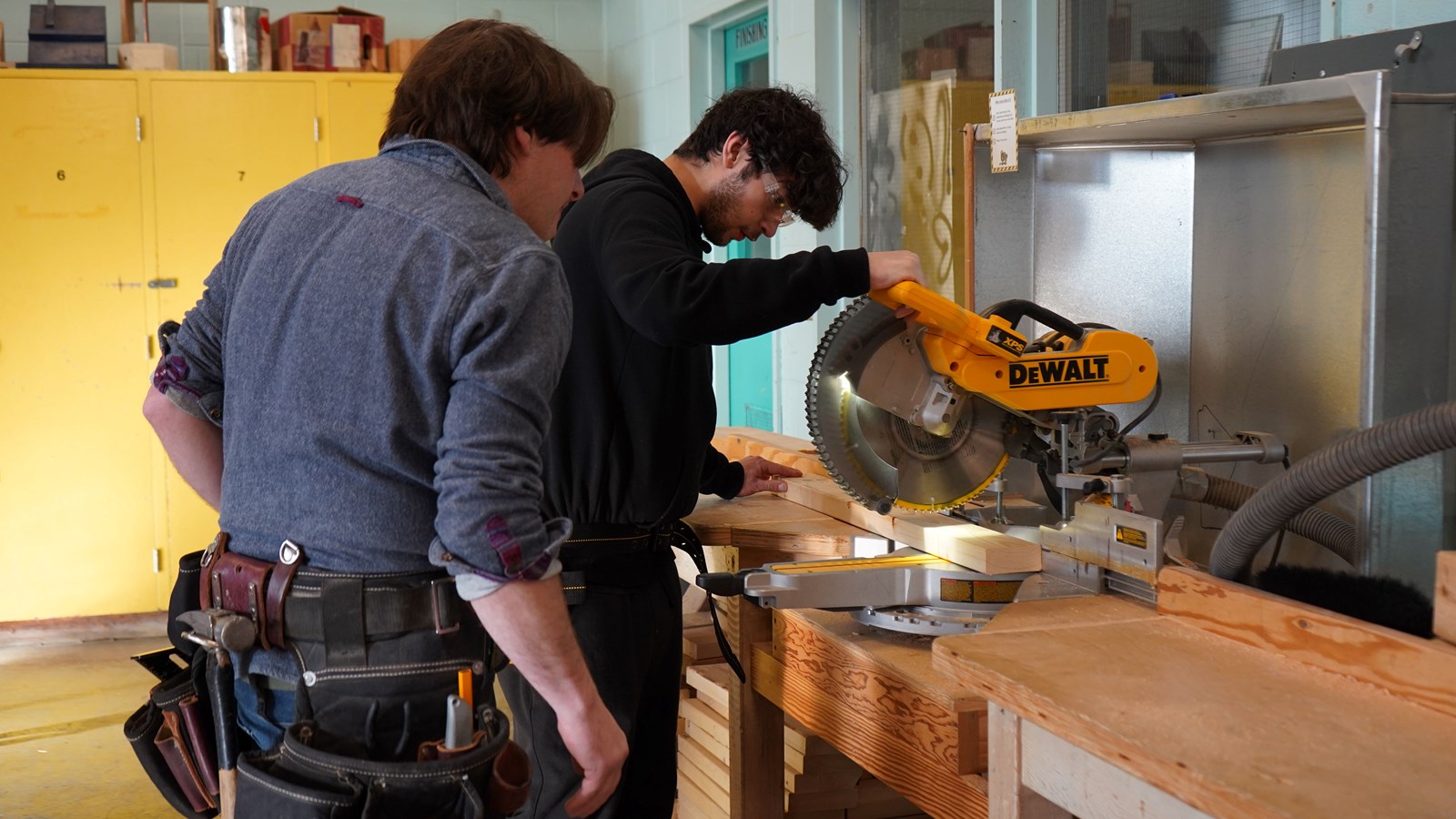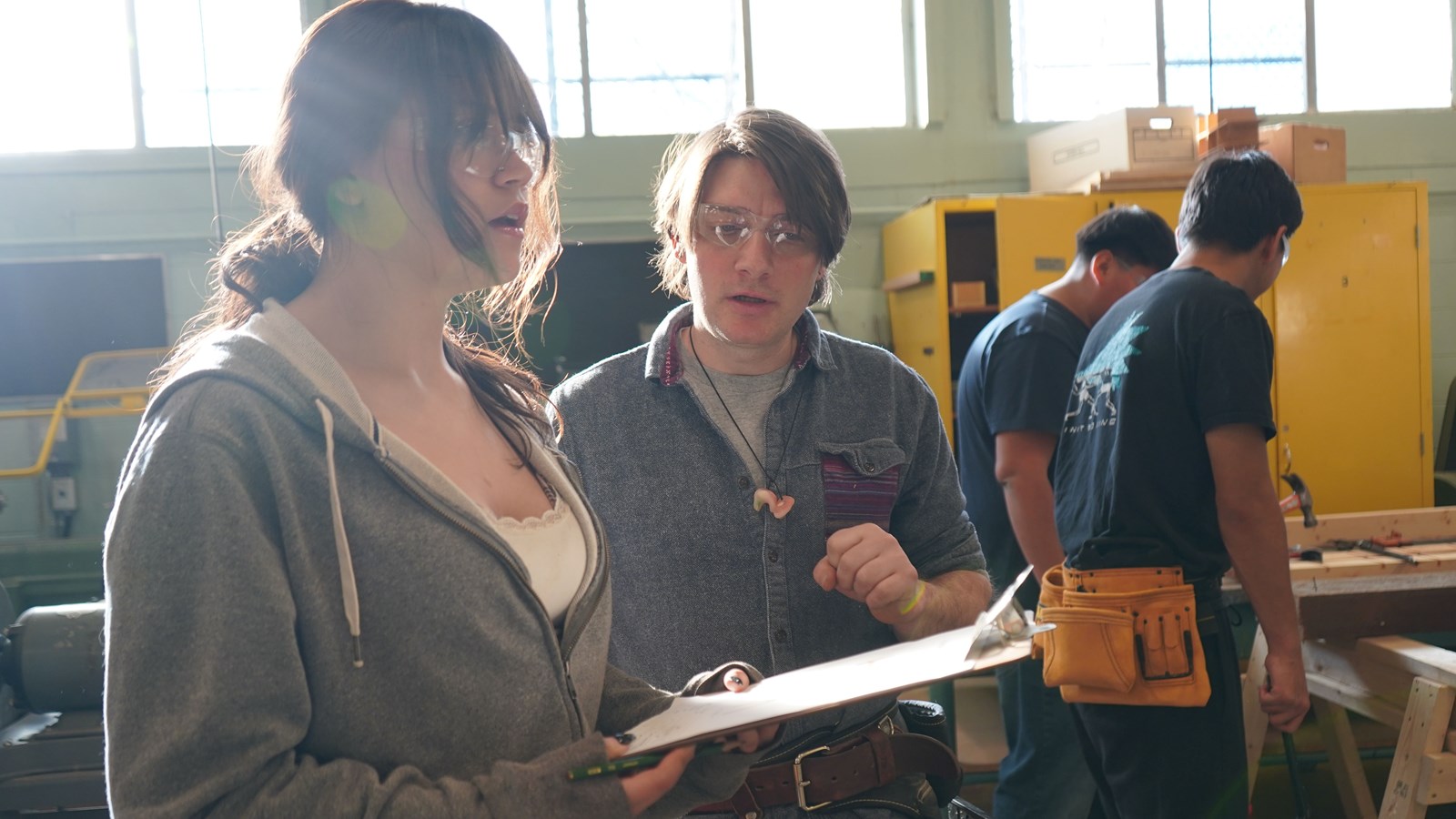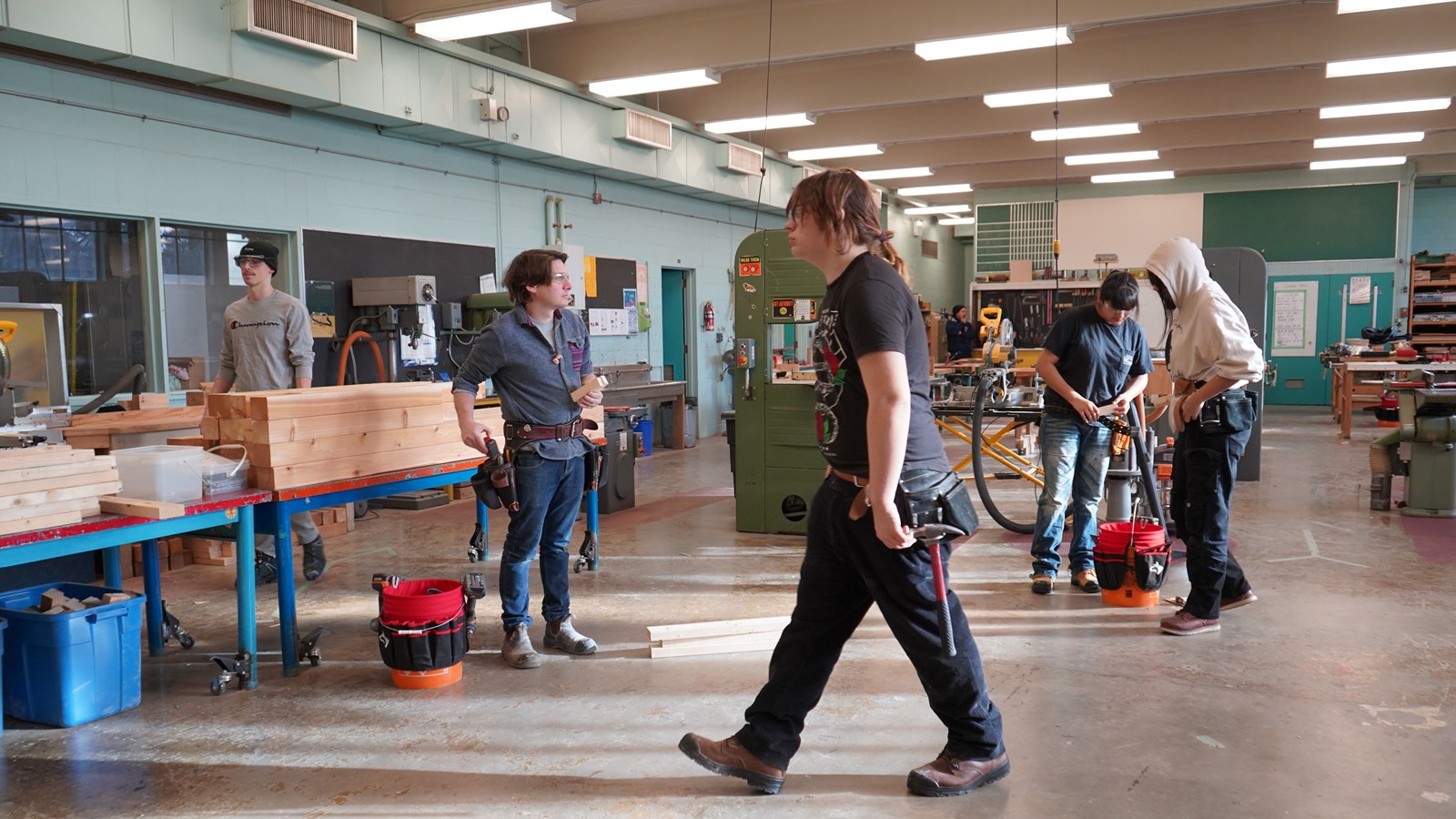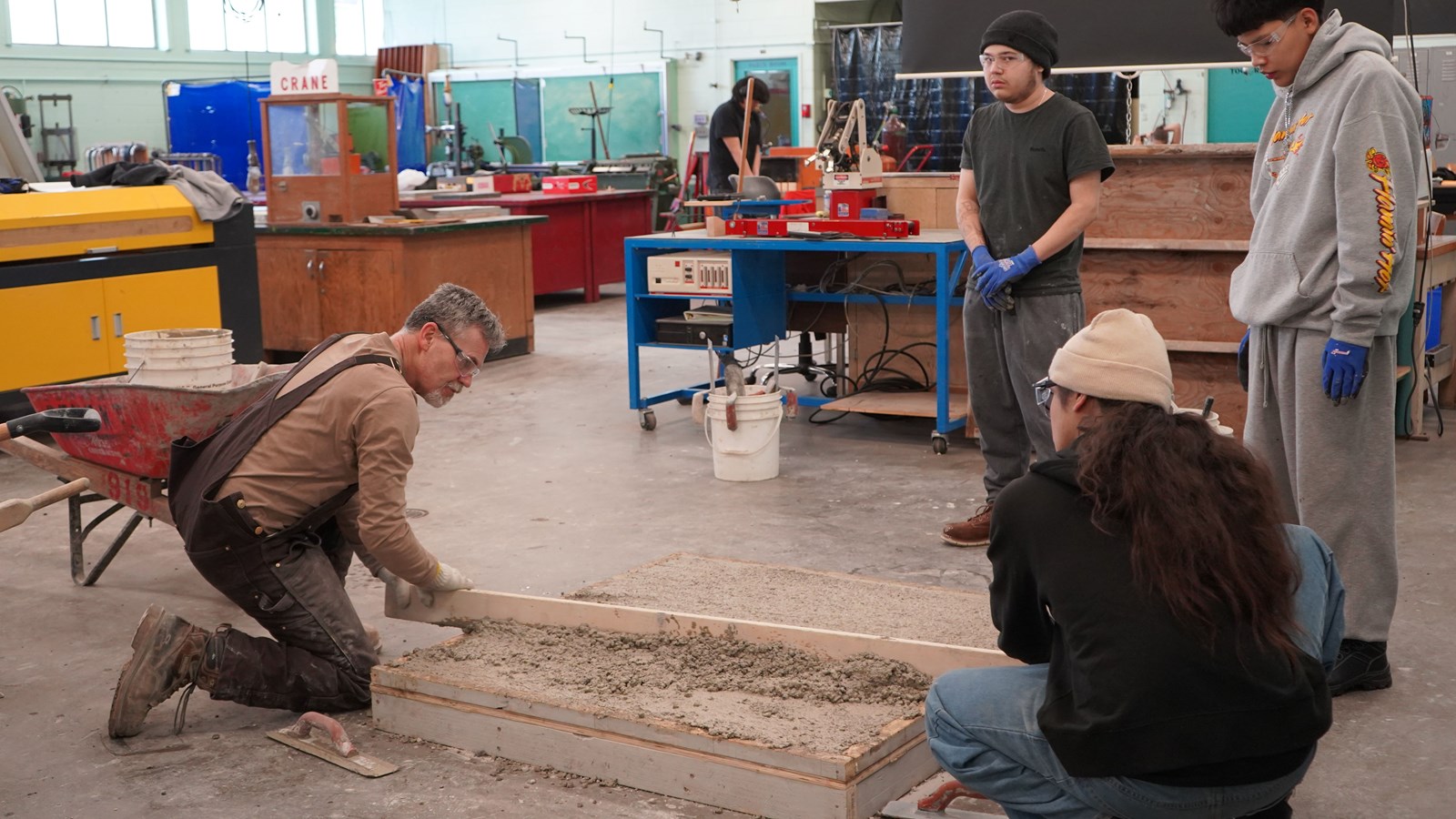Trying out the Trades: 16 Indigenous students explore carpentry, concrete finishing and brick laying

In January, VSB career programs and the Indigenous education department partnered with BCIT for a three-day Try a Trade event at Tupper Secondary. Sixteen Indigenous youth in grades 10-12 pulled on a pair of steel toe boots to learn the basics of carpentry, concrete finishing and brick laying. With guidance by industry experts, students explored potential career opportunities through hands on learning and discovery.
Careers in trades are vital to the growth of our province. Skilled trades workers are in demand and opportunities are abundant. In Vancouver alone, several major developments will be led by local First Nations including Sen̓áḵw, Heather Lands, Jericho Lands and the Rupert Skytrain towers.
“Right now, in the City of Vancouver, for First Nations-led developments, all contractors are required to have between a 10 and 25 per cent Indigenous workforce, so these students here today, if they decide to pursue trades will essentially be front of the line,” says Ryan Fullerton, District principal for career programs. “We’re providing opportunities for young people to be connected to school while looking to the transition to the working world.”
The three-day sampler was facilitated by three industry experts: a concrete finisher from the Trowel Trades Training Association and, from the same association, VSB’s own brick mason, Paul Witt. The carpentry workshop was facilitated by Tupper teacher and Red Seal carpenter, Joseph Hamilton. The Indigenous inclusion department at BCIT, provided grant funding for transportation, meals and workshops. Each student was also paid while exploring the trades, thanks to the grant support.
Darien, a Grade 10 student from Templeton, thinks a career in trades is definitely an option and enjoyed learning the different trades. “I’d say it’s all been pretty fun. We got free boots and free glasses.”
Fullerton explains that for most of the skilled trades, it’s a two-, three- or four-year pathway. Each level involves six to eight weeks of theory and 1,500 to 1,700 hours of work. For a four-year pathway, a student would need about 7,000 hours of work and a certification exam to obtain their Red Seal, enabling them to work anywhere across Canada.
A year of schooling is typically $1,000 to $1,500. When students obtain their certification, they can make from $40-$70 per hour with plenty of overtime opportunities.
Through VSB’s career programs, students earn both secondary school graduation and post-secondary credits in skilled trades. By participating in career programs students are a year ahead in their chosen field and have their first level of training paid for by the District.
Jack, a Grade 11 student at Van Tech believes that a career in trades is a very viable path. “I honestly do think it’s a path that I will be going down. I think carpentry is my favourite so far. I like all the tools and working with my hands.”
Fullerton is familiar with Jack’s view and finds the trades makes sense for a lot of students. As a former tech ed teacher himself, he enjoys seeing students light up when using tactile skills to solve a problem. By providing students with practical workplace experience, students gain knowledge and increase their self-confidence. “Not everyone has to learn in the same way to be successful,” he says. “We get to open doors and have different pathways for young people.”



